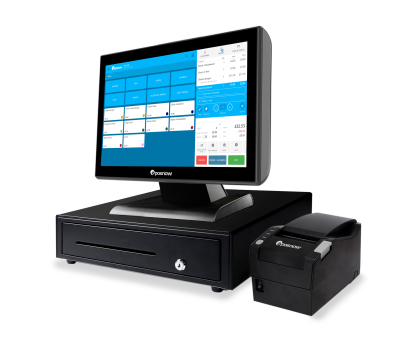What is POS System Software?
Electronic point of sales (POS or EPOS) systems have come a long way since their humble beginnings as mechanical cash registers in the 1800s. The most basic models of today would completely dazzle business owners from even just a few years ago.
As part of this continuing innovation, POS software has grown with the hardware and become more and more sophisticated. These innovations have made the lives of business owners so much easier and have improved customer service across the board.
If you have invested in a top-of-the-line digital till, you may be asking yourself what is POS software in the first place? We’re glad you asked because this blog will answer that very question and more.
What is POS software?
POS software refers to the programmes that run a POS system. Even low-tech systems will be operating on a crude version of POS software. While most POS software is developed to be a one-size-fits-all solution, some companies, such as Epos Now, offer specialised software tailored to the specific needs of businesses like bakeries and clothing stores.
Specialised software allows business owners to work with programmes designed for their industry. This means that they have a greater control of their business and have the exact tools they need to succeed.
How does POS software work?
While using a POS system is relatively simple, the processes that drive the software can be quite complicated. These processes include transactions, payment processing, app integrations, and cloud-based data storage. This means that POS software needs to be able to handle many different programmes at once while remaining flexible and easy to use.
Transactions and payment processing
The most basic function of a POS system is to facilitate credit cards transactions and accept payments. From the outside, this is a simple process. A customer initiates a transaction, there is an exchange of funds for goods and services, and the customer goes on with their day.
The actual process behind card transactions is much involved and features several players including the customer, the business, and the issuing bank of the card. The process can be broken down into three steps:
- Authorisation - The customer initiates the transaction by putting their card into the card reader and entering their pin. This alerts the card’s issuing bank which then verifies the information on the card and grants permission for the transaction to continue.
- Authentication - Once the transaction is authorised, the issuing bank will then verify the seller’s identity and allow funds to be transferred into their merchant account.
- Settlement - The transaction is completed, the seller will issue a receipt, and the money will be finally transferred. Depending on the payment processor and the banks involved, it may take a few days for the money to arrive in the correct account.
App integrations
One of the biggest benefits of using a modern POS software system is its ability to integrate with different apps. Some of these will be built by the POS company and some will be by third-party developers. These applications can be as varied as the apps on your phone and each serves a specific purpose.
If we take the Epos Now App Store as an example, we can see that there are 100s of apps available for POS systems. For instance, If you’re a restaurant struggling with staff scheduling, you could install Workforce.com and automate the process. If accountancy isn’t your thing, apps like Xero could save you hours of time.
Cloud-based systems
Many modern POS solutions operate as cloud-based systems. This means that all the data collected and processed by the system is stored in off-site servers that are accessible remotely. Most traditional servers were onsite, which means the data could only be accessed in person.
Cloud-based systems have several advantages to local systems. These systems are cheaper to maintain and are physically safer that on-site servers. They also allow you to access your data from anywhere which can be very convenient if you run multiple locations.
Gain all the advantages of an EPOS system with detailed, flexible, downloadable reports, and so much more:
- Manage and update products quickly with easy to use software
- Expand your business into multiple channels and integrate with a variety of online platforms
- Manage multiple locations and salespoints with multi-site management
- Keep queues short with streamlined, modifiable sales processes
- Choose a setup that suits you with software and hardware options

What is POS software in retail?
POS software is exactly what it sounds like. It’s a POS software that’s been designed to meet the specific needs of retail businesses. These systems are typically designed to focus on inventory management software and integrations with eCommerce solutions.
Online sales have become an increasingly popular way for consumers to buy what they need. Due to this, many retail POS software systems are capable of building websites and setting up profiles on online storefronts.
What is POS software in hospitality?
Much in the way retail systems are focused around retail needs, POS software geared towards hospitality are focused on hospitality needs. These needs can include online food ordering, staff and kitchen management, and stock takes.
The best in POS software and hardware
For a business to succeed in the modern climate, they need to ensure that they’re working with the best POS system on the market. The Epos Now Complete solutions comes the software you need to run your business effectively and efficiently.
If you’re interested in find out more about Epos Now, get in touch with our expert team below.




